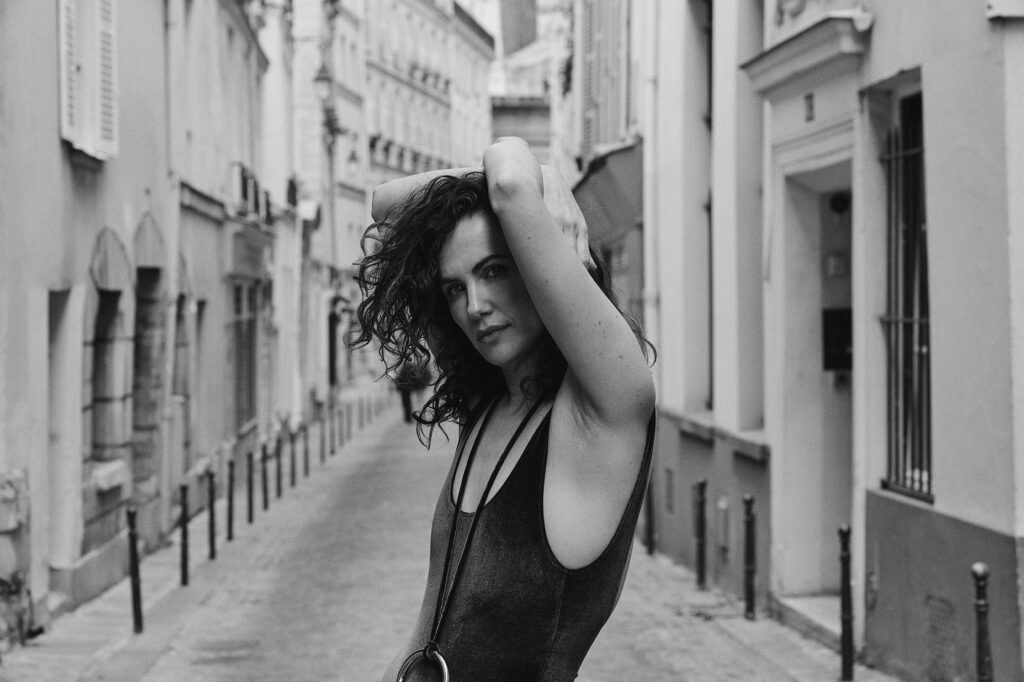
Kate Siegel
In Netflix Series
The Fall of The
House of Usher
Photography Martin Kunert
Creative Director Deborah Ferguson
Interview by Laasya Gadiyaram
Kate Siegel is widely known as the queen of Netflix horror, and now she’s making her return. In The Fall of the House of Usher Siegel transforms an Edgar Allan Poe short story into a theatrical work of art. We talk about the evolution of the horror genre, costuming in media, and Paris Fashion week!
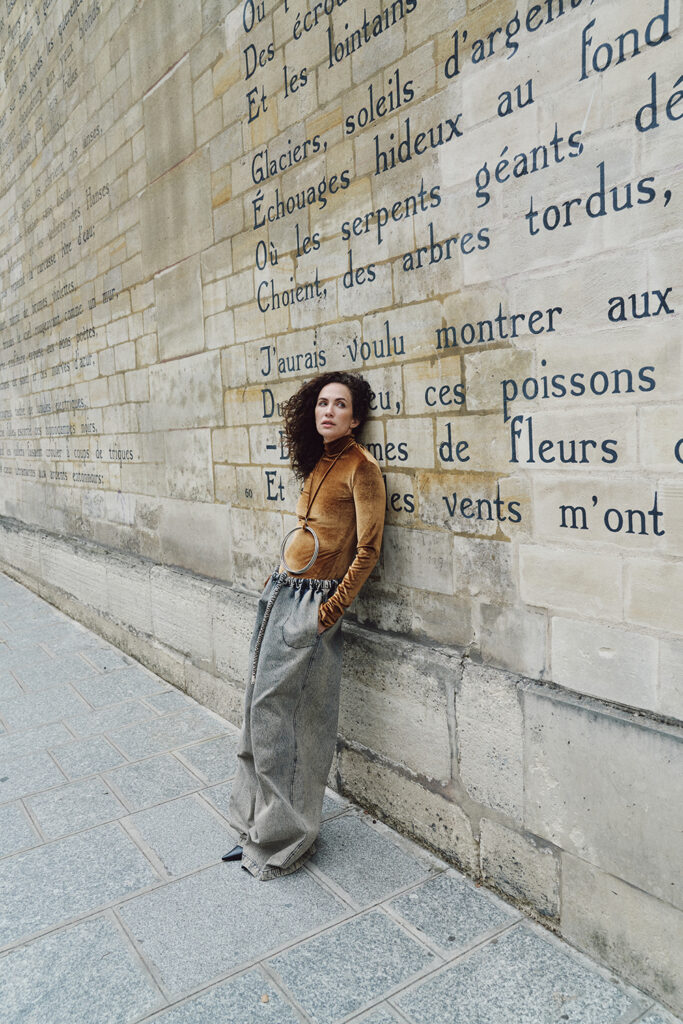
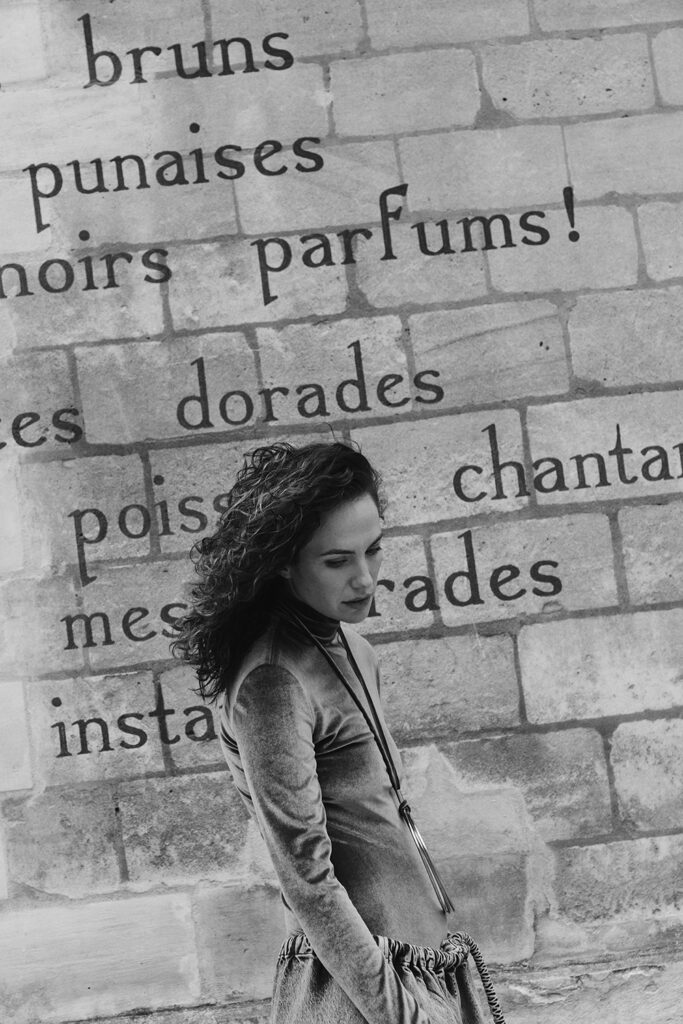
Body Suit, Denim Pants & Necklace available at Veronique LeRoy, Heels ByFar
LG: Congratulations on your Netflix series! How has the process been in comparison to your previous work on other Netflix projects?
KS: Thank you! This process was much more over-the-top than previous shows! Although it’s a lot of the same cast and crew, the style of the show was way more exuberant. In the other Netflix shows I’ve done, my characters have been more grounded and internal, even reserved and closed-off. In Fall of the House of Usher, everything is turned up to 11. The choices, the styling, the hair and makeup, all of it is bombastic- it was such fun to get into hair and makeup and wardrobe every day.
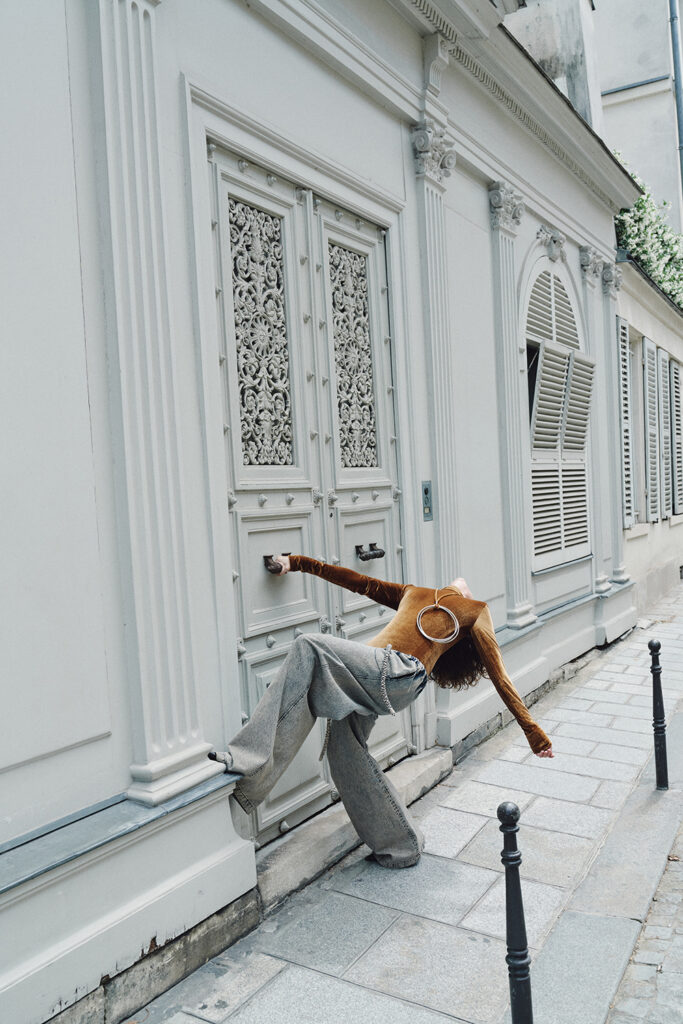
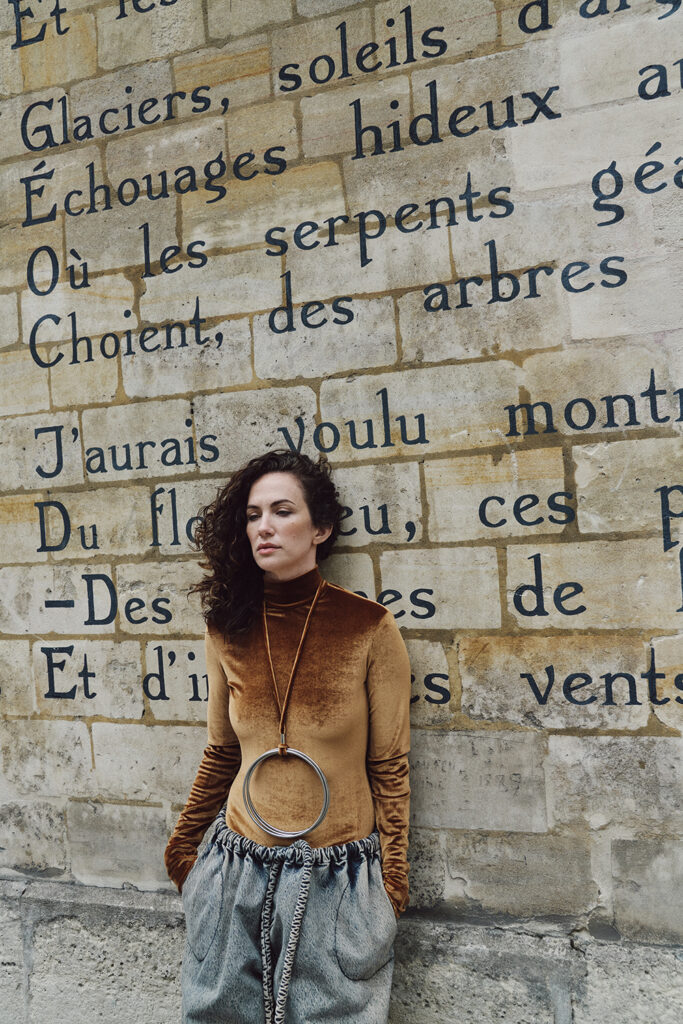
Body Suit, Denim Pants & Necklace available at Veronique LeRoy, Heels ByFar
LG: Much of your work relates to horror. What do you think makes a great piece of horror media?
KS: Crafting a fantastic piece of horror is an art, and I think it comes down to a few key elements: Compelling characters- well developed characters who are relatable, with flaws and fears that make them feel real. Pacing is key. It should feel like a roller coaster ride: building tension gradually, and then moments of relief, and then back into chaos: so you’re always keeping viewers on their toes. You definitely need plot twists and turns – unpredictability! Surprising the audience keeps them invested in the story. Also, a real cinematic artistry: a masterful use of cinematography, interesting camera angles, lighting, and sound design. Those elements can turn an ordinary scene into something really spine-chilling. And lastly, it needs emotional resonance. Horror should evoke emotions beyond just fear, it should leave a lasting impression. Hopefully nightmares.
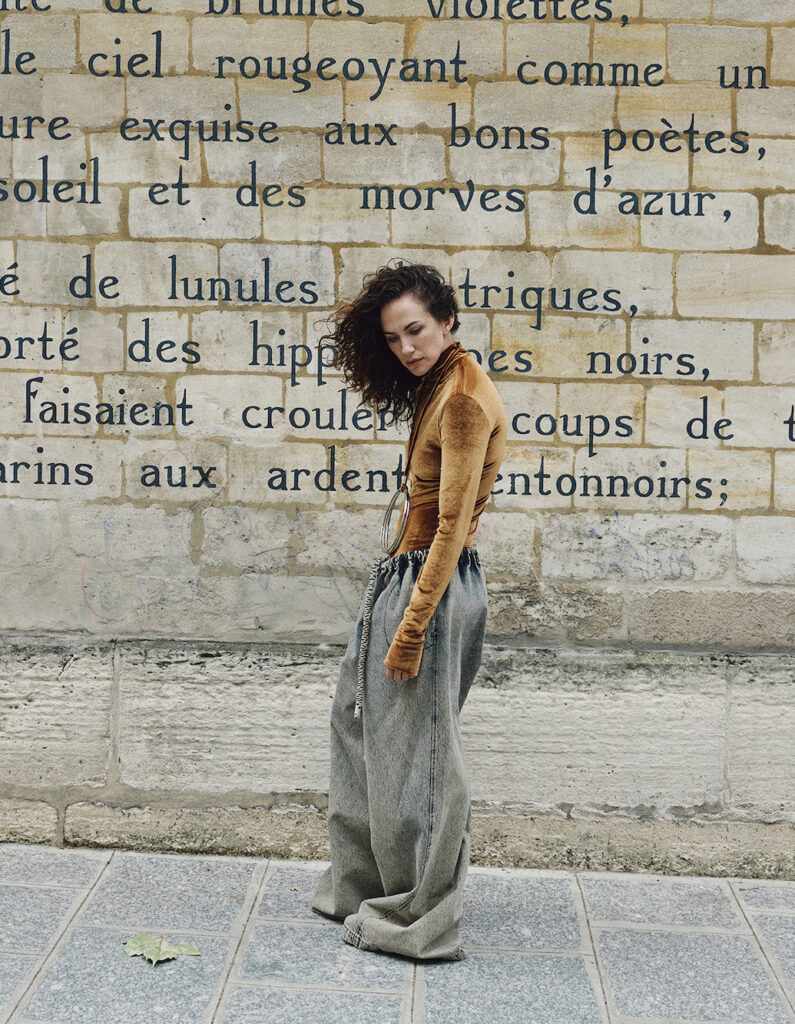
Body Suit, Denim Pants & Necklace available at Veronique LeRoy, Heels ByFar
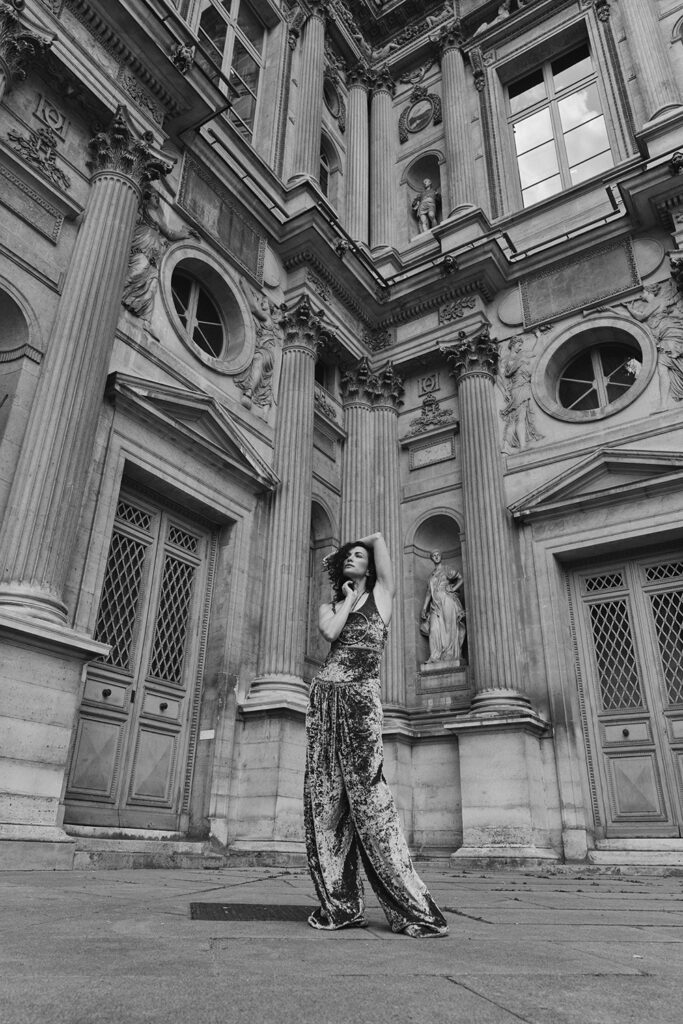
Body Suit, Vest, Pants, Heels & Necklace available at Veronique LeRoy
LG: How does horror acting compare to other forms of dramatic acting?
KS: For me, horror acting is much more fun, but it does come with its own unique challenges and considerations. You’re dealing with heightened intensity and emotion… all acting demands emotional depth, but the intensity of those emotions are much more extreme in horror films. It can feel like an extreme sport- it requires more bravery, but the payoff is that it’s more fun. And frequently you have to work with practical effects like prosthetics and blood- and that can be really distracting, the stickiness of the blood, the restrictions of prosthetics. But the sets really are more fun. I’ve laughed harder on horror sets than anywhere else I’ve worked.
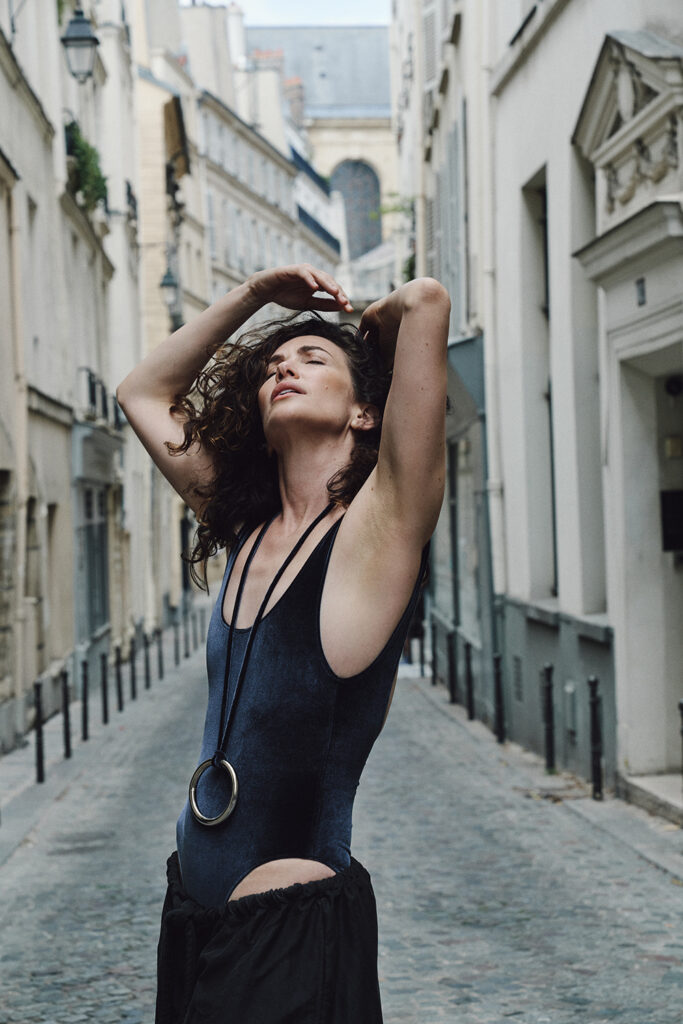
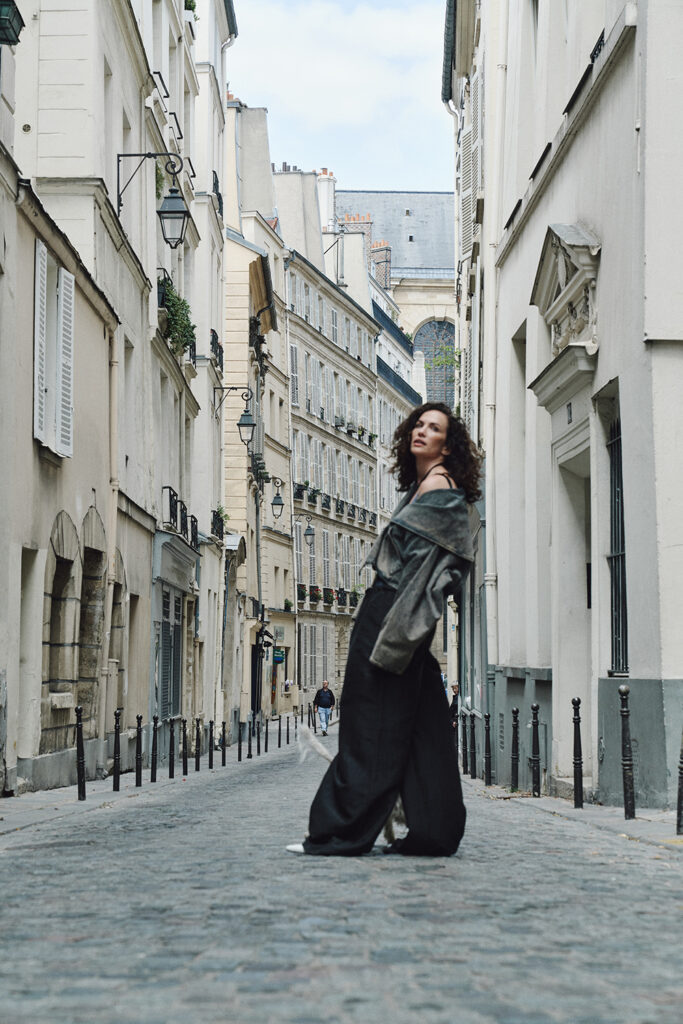
Bodysuit, Pants, Jacket & Necklace available at Veronique LeRoy, Heels ByFar
LG: Haunting of Hill House focuses on ghost stories whereas other horror works focus on gore and fear. Within horror is there a particular narrative that you find yourself gravitating towards?
KS: The narratives I’m drawn to in horror don’t differ that much from the narratives I’m drawn to in any artistic medium- novels, music, fashion. I crave emotional depth. I’d like it to be a challenge—something that I can really bite into, that makes me push my own boundaries, either as a performer or audience member. I want it to feel real, even heightened or extreme situations should be grounded in reality. Something that’s complex, a mix of virtues and vices, contradictions and vulnerabilities. I like to explore the outreaches of humanity. The places where the lines between black and white get blurry.
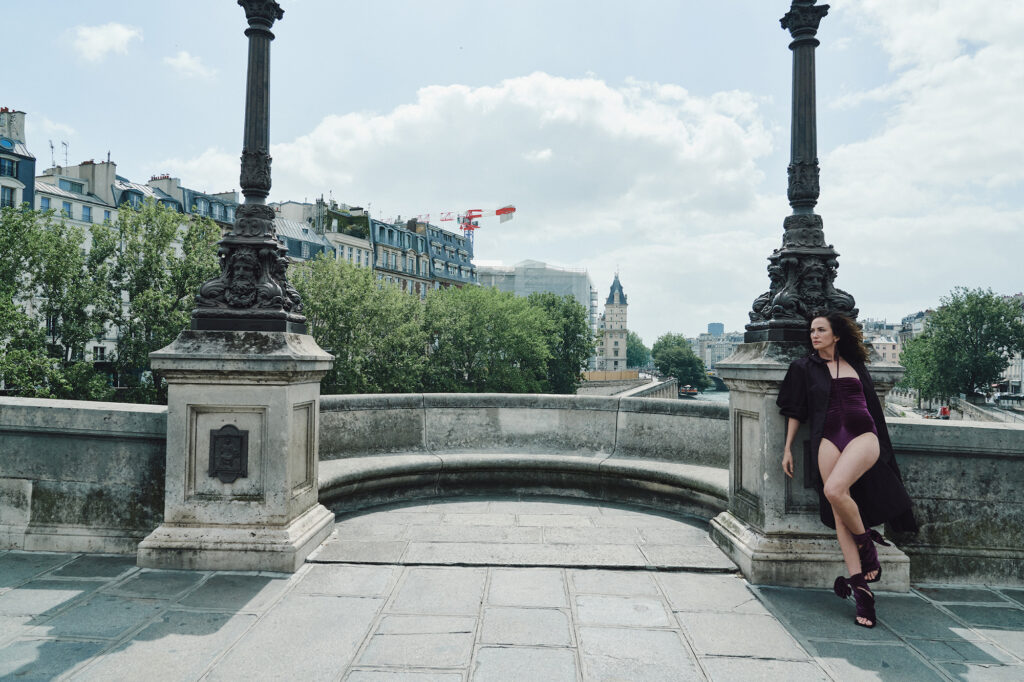
Body Suit, Trench Jacket, Heels & Necklace available at Veronique LeRoy
LG: Many people associate horror with blockbuster slasher films. How do you think the genre has changed with streaming and the digital age?
KS: The digital age and the rise of streaming platforms have transformed the horror genre in so many ways. The biggest being increased diversity of horror content. While classic slasher films will always have a dedicated following, there are finally opportunities for lesser-known filmmakers to thrive. Similarly, accessibility has also been a game-changer. In the past, you might have had to wait for a specific movie to hit theaters or be released on DVD. Now all types of horror content are just a click away, available 24/7. This accessibility has spurred innovation and creativity within the genre, as filmmakers experiment with new ways to tell stories. It’s a golden era for horror creators, with more opportunities to bring their visions to life. And how the internet fosters online horror communities and fandoms. Social media, forums, and fan sites… This sense of community adds to the whole experience. Even when you’re watching a film alone, you can find people to talk to, other viewers to debate with and connect with.
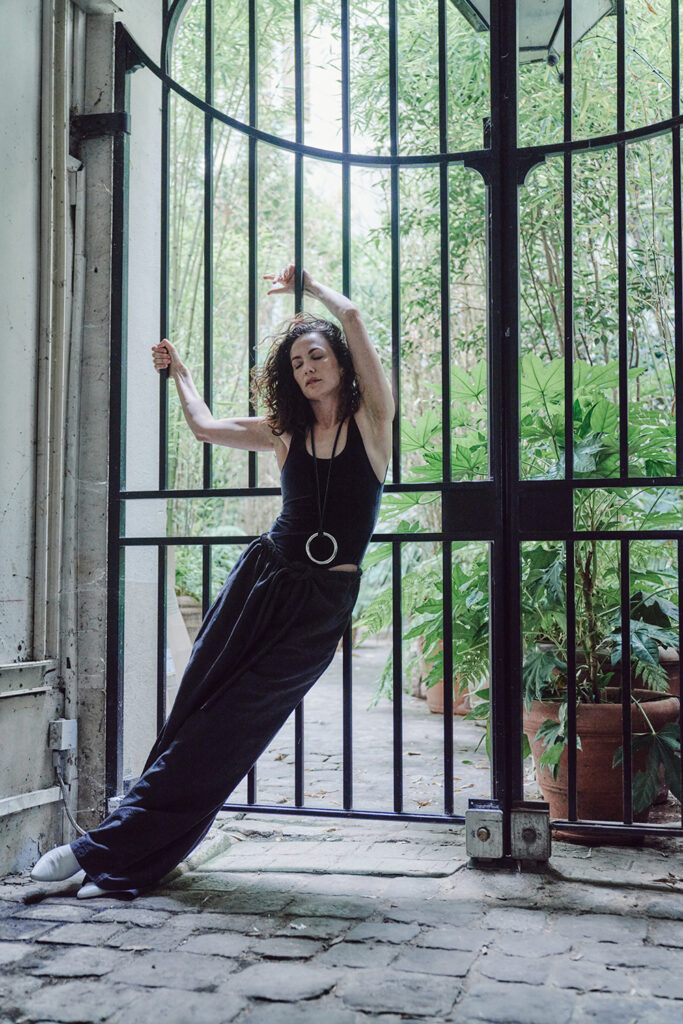
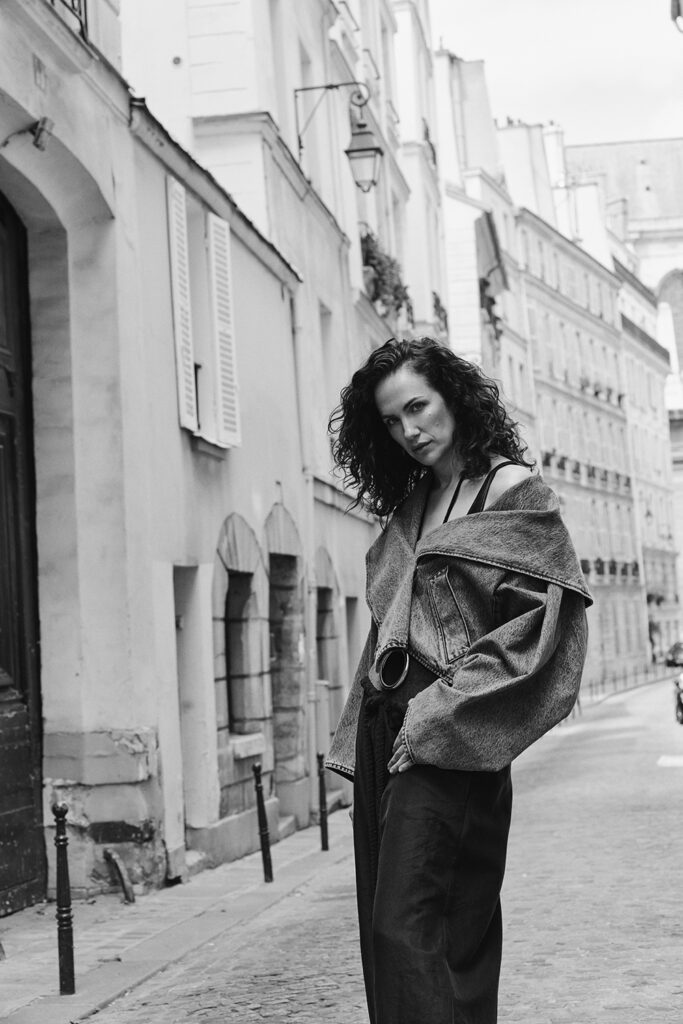
Bodysuit, Pants, Jacket & Necklace available at Veronique LeRoy, Heels ByFar
LG: Many people associate horror with blockbuster slasher films. How do you think the genre has changed with streaming and the digital age?
KS: The digital age and the rise of streaming platforms have transformed the horror genre in so many ways. The biggest being increased diversity of horror content. While classic slasher films will always have a dedicated following, there are finally opportunities for lesser-known filmmakers to thrive. Similarly, accessibility has also been a game-changer. In the past, you might have had to wait for a specific movie to hit theaters or be released on DVD. Now all types of horror content are just a click away, available 24/7. This accessibility has spurred innovation and creativity within the genre, as filmmakers experiment with new ways to tell stories. It’s a golden era for horror creators, with more opportunities to bring their visions to life. And how the internet fosters online horror communities and fandoms. Social media, forums, and fan sites… This sense of community adds to the whole experience. Even when you’re watching a film alone, you can find people to talk to, other viewers to debate with and connect with.
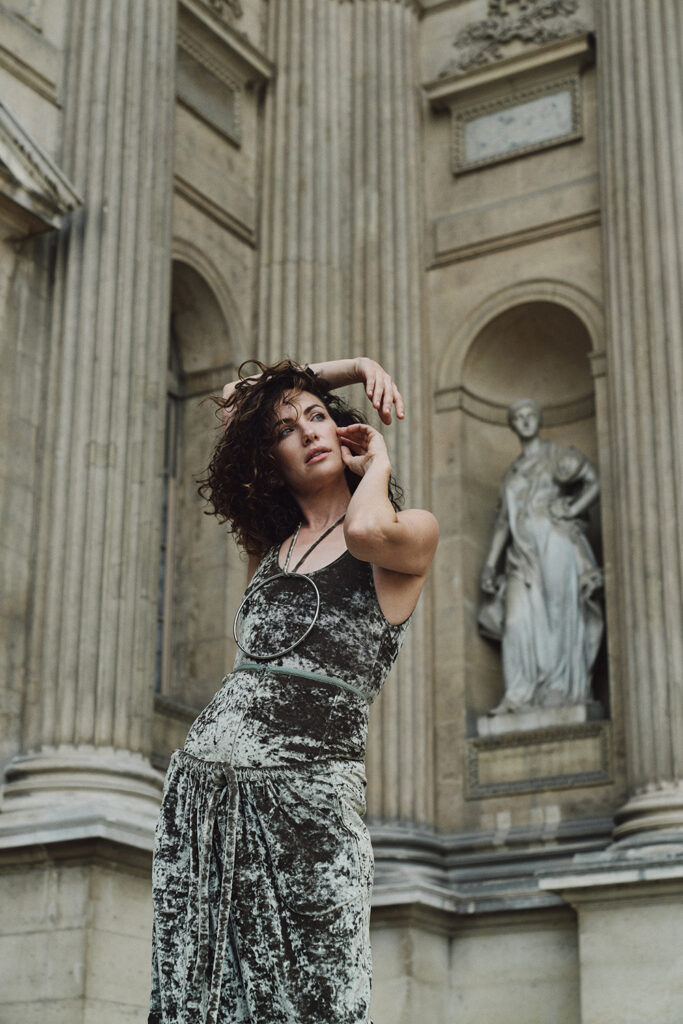
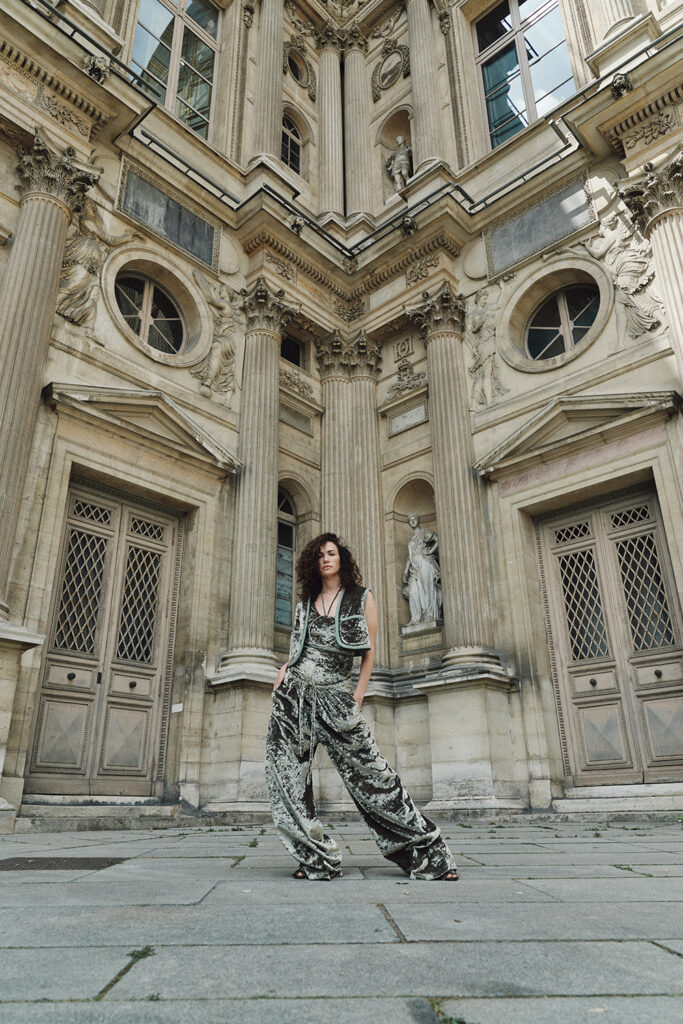
Body Suit, Vest, Pants, Heels & Necklace available at Veronique LeRoy
LG: The Fall of the House of Usher is an adaptation of a series of Edgar Allan Poe stories. Do you have a different approach to adaptations than you do with written-for-screen film and television?
KS: Well, these specific Mike Flanagan adaptations don’t really follow the point-by-point narratives of the original stories. However, Poe’s work is a great touchstone in terms of tone and character. Understanding the style of the IP is a great guide for building character and performance. Aside from that, I mostly rely on the episodic script to guide me, as well as my director. I like to feel like a small cog in the storytelling machine, no matter the size of the part I’m trying to figure out how to best serve the story.
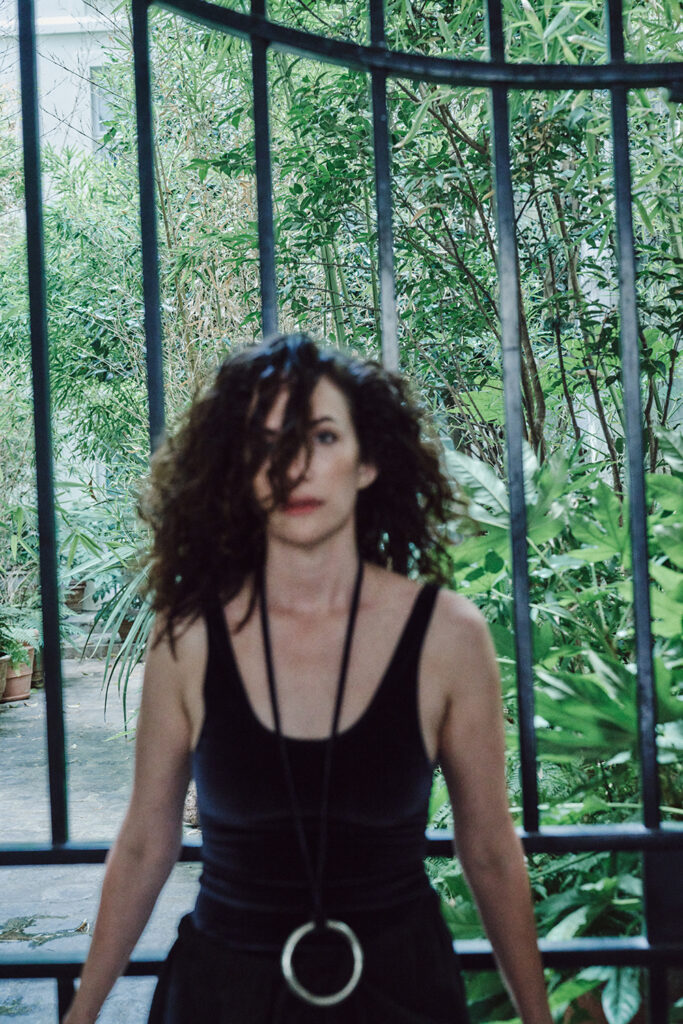
Bodysuit, Pants & Necklace available at Veronique LeRoy, Heels ByFar
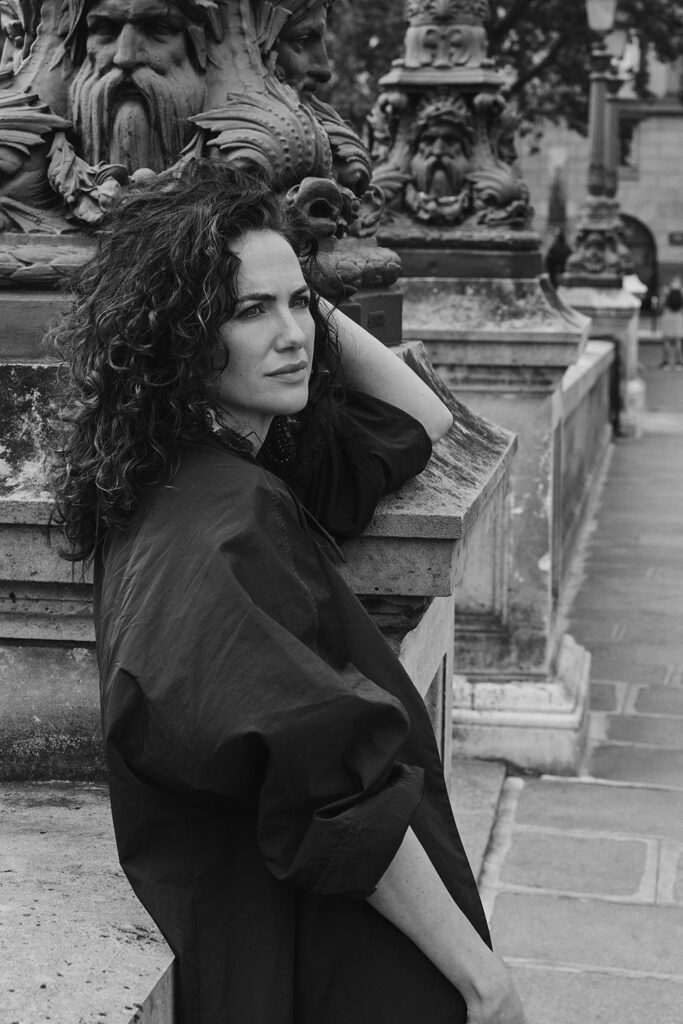
Body Suit, Trench Jacket, Heels & Necklace available at Veronique LeRoy
LG: How do literary adaptations differ on screen compared to on stage?
KS: It’s fairly similar, obviously the screen allows for a depth and breadth of story that a 2-hour stage play just doesn’t have, but the adaptation is the same: it all starts from a place of “Why this story? Why now?”
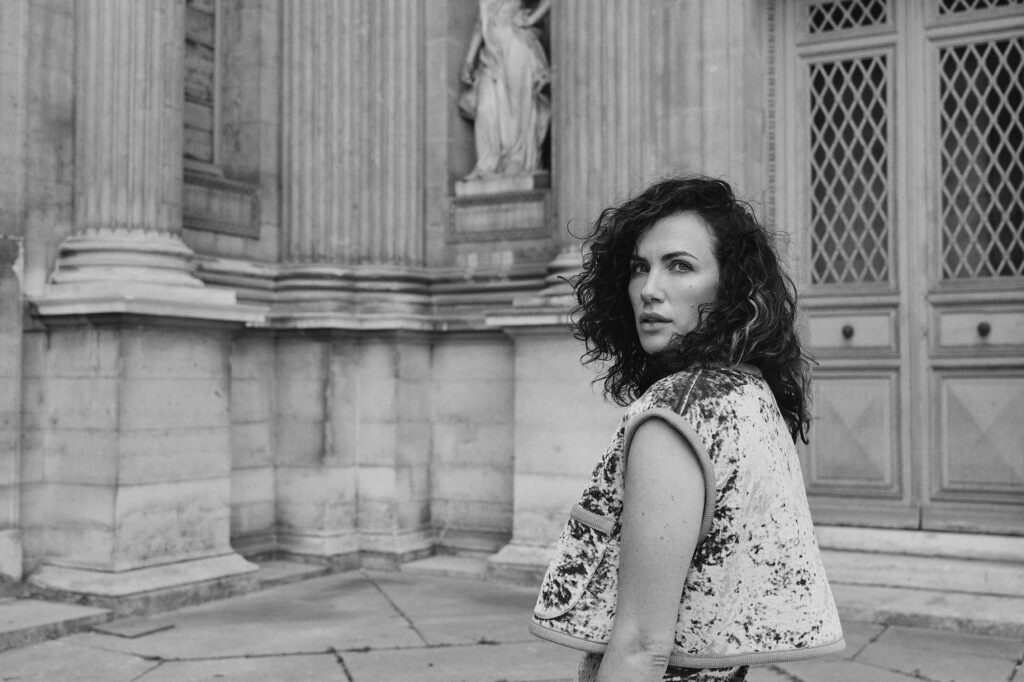
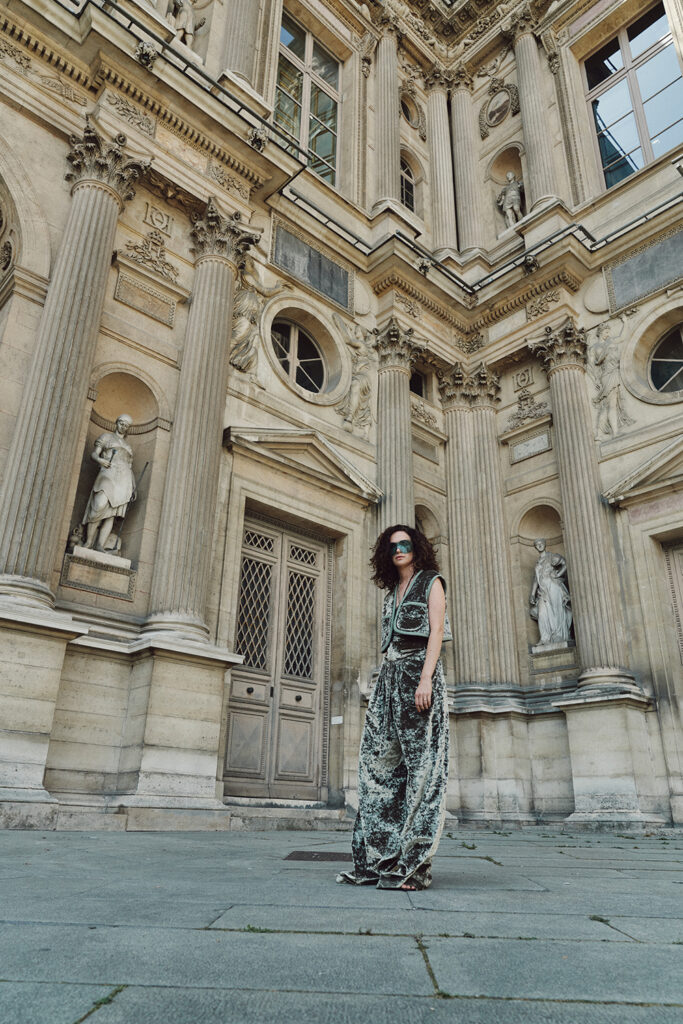
Body Suit, Vest, Pants, Heels & Necklace available at Veronique LeRoy
LG: How do you think horror novels and horror movies relate? How do you think they differ?
KS: Horror novels and horror movies share a very simple common goal: to elicit fear in their audience. But they get there in vastly different ways. They are two paths to the same dark pond. Both should start with a great story. A well-structured tale with relatable characters. And they both tap into the fundamental human fears: fear of the unknown, supernatural forces, psychological terror, or real-world horrors. Effective horror in either form hinges on the development of complex and relatable characters. In both novels and movies, the audience needs to care about the characters’ fates, whether to root for their survival, witness their descent into darkness or cheer for their demise. I think the most significant difference is in the way they engage your imagination. In horror novels, your mind is actively involved in conjuring the images, allowing for deeply personal and vivid mental landscapes. But horror movies provide an immediate experience- filmmakers craft the visuals for you. Novels often allow for more gradual development and introspection, whereas movies need to use editing, music, and scares to maintain tension and pace. Reading a horror novel is an inherently personal experience, people engage their imagination to fill in the gaps. In contrast, horror movies are more collective, with the audience being led through the journey by the filmmakers. The best way to enjoy a horror novel is alone, but the best way to watch a horror movie is with a group.
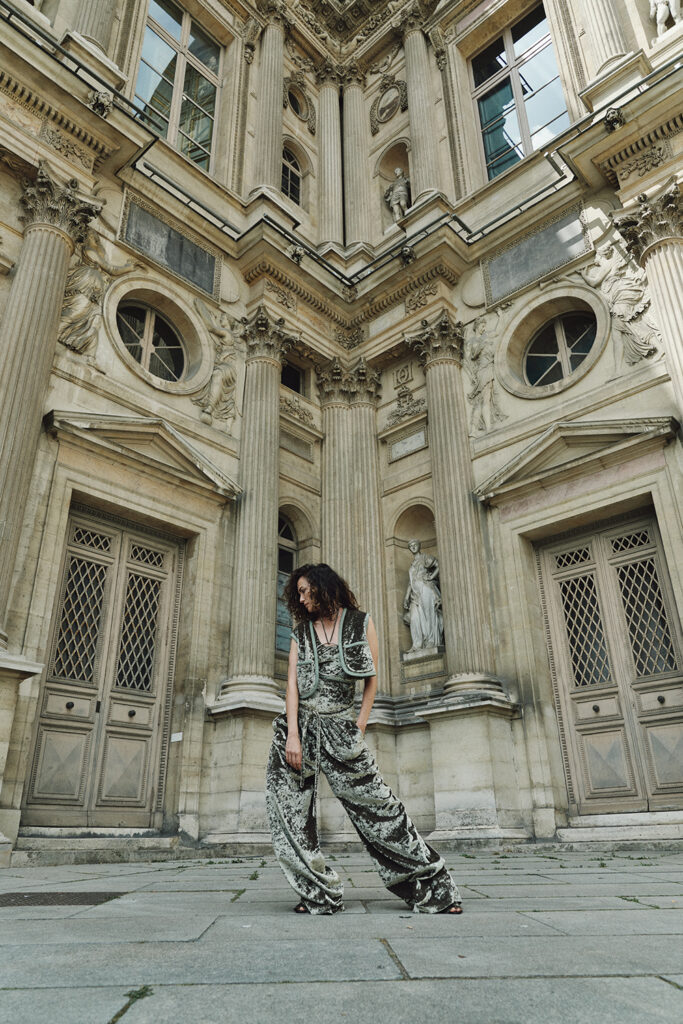
Body Suit, Vest, Pants, Heels & Necklace available at Veronique LeRoy
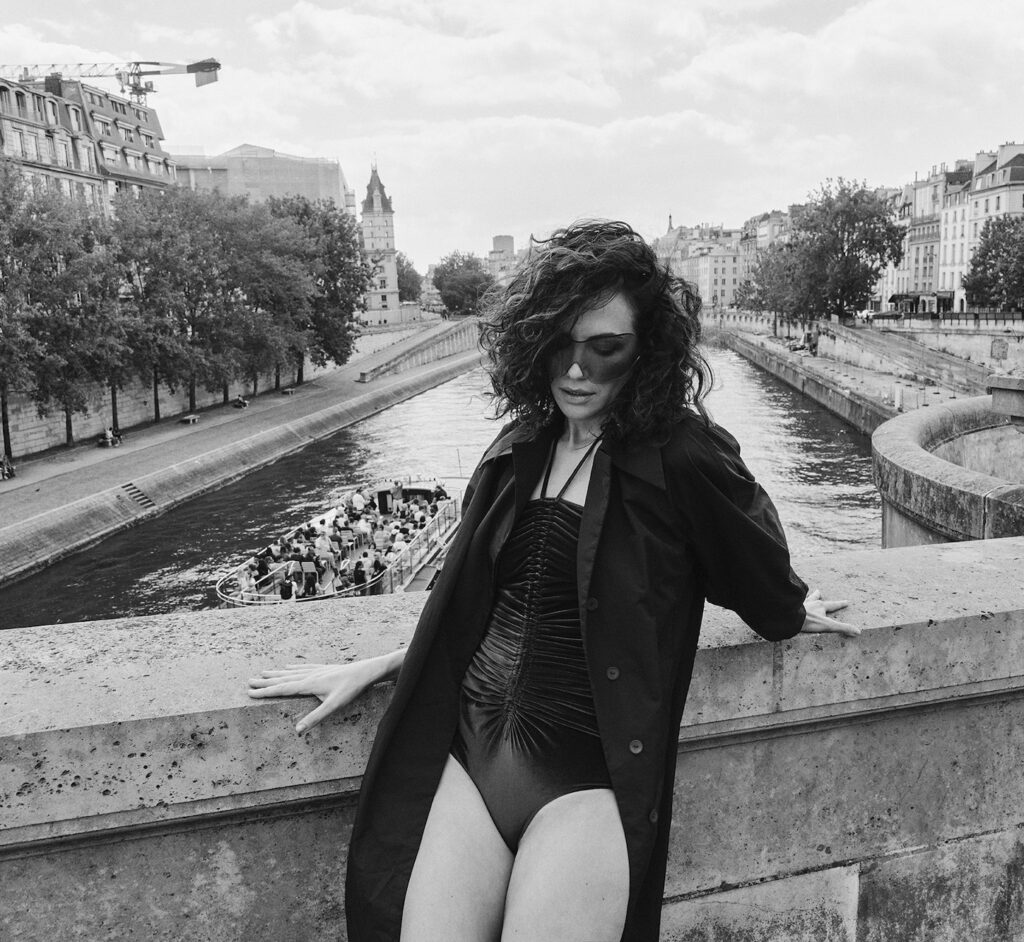
Body Suit, Trench Jacket, Heels & Necklace available at Veronique LeRoy
LG: Costuming for horror media typically involves red and black, blood and gloom. Do you find this stifling, from a fashion perspective? Or do you find creative opportunities within this?
KS: With all due respect, I think this is an outdated opinion of the horror genre- I look at films like Midsommar and Suspiria, The Cell and even The Love Witch- they all have wonderfully colorful cinematic worlds and wardrobes. Each and every horror character I have played has been deeply flushed out in color by costume designers. I tend to find the horror genre is more creativity inspiring than a traditional medical drama or rom-com. In the same way that the emotions are heightened in horror, I find that the color palate is more expansive and rich. The costumes work hard to define character and reflect the arc of the role.
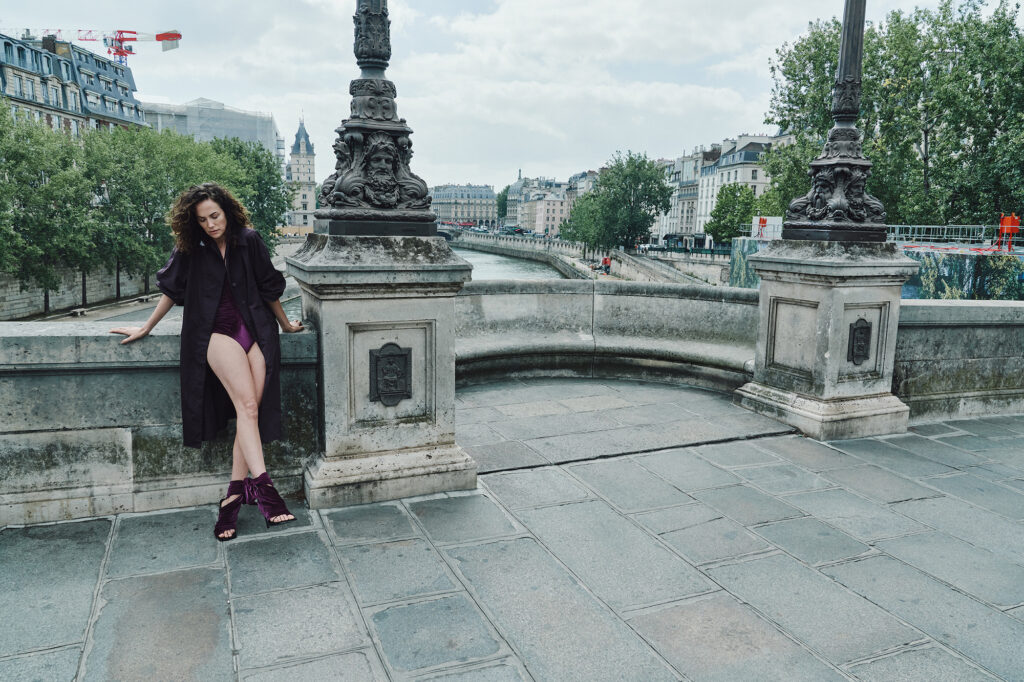
Body Suit, Trench Jacket, Heels & Necklace available at Veronique LeRoy
LG: Do you find that your personal sense of style mirrors the genre you work with, or does it differ entirely?
KS: My style shows up in most of the characters I play. A lot of Camille’s wardrobe in Fall of the House of Usher either came from my closet or ended up in my closet at the end of the shoot. Terry Anderson, the costume designer, and I worked together very closely to take our love of fashion and the theatrical and blend that into Camille’s icy and silver world. I vividly remember when Terry had to slice a Givenchy turtleneck in half to sit more smoothly under a Dion Lee dress. Both of us cringed a bit, like it physically hurt to do it. For a character like Erin Greene in Midnight Mass, Terry and I talked about her history, and how she was running away from an abusive husband. She showed up on that island with just a backpack, and probably all of her clothes came from the church donation bin, or were found in her mother’s closet. Every single outfit was viewed through that lens.
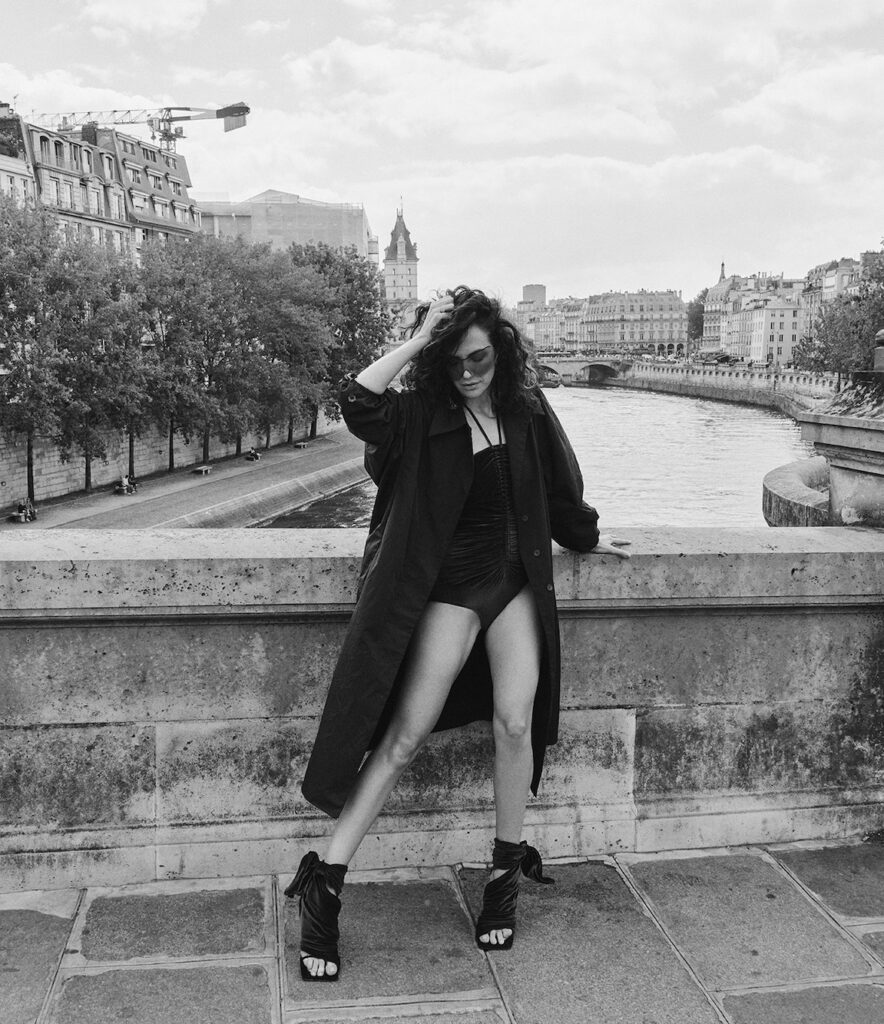
Body Suit, Trench Jacket, Heels & Necklace available at Veronique LeRoy
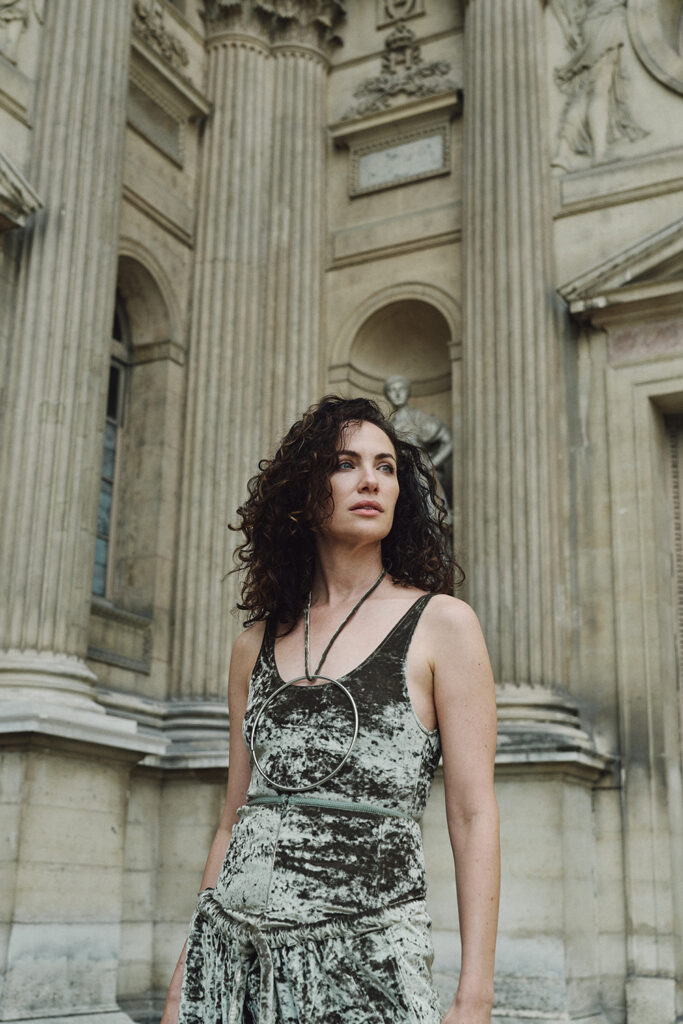
Body Suit, Vest, Pants, Heels & Necklace available at Veronique LeRoy
LG: How was your Paris Fashion Week experience? Are there any designers you took note of specifically?
KS: Paris fashion week was a dream from start to finish. It really is the most chic city in the whole world and there is a certain excitement in the air during fashion week. Well, as close as the French get to visible excitement. I fell even more in love with Schiaparelli. Daniel Roseberry has infused fashion with surrealism that speaks to my love of the absurd and the beautiful.
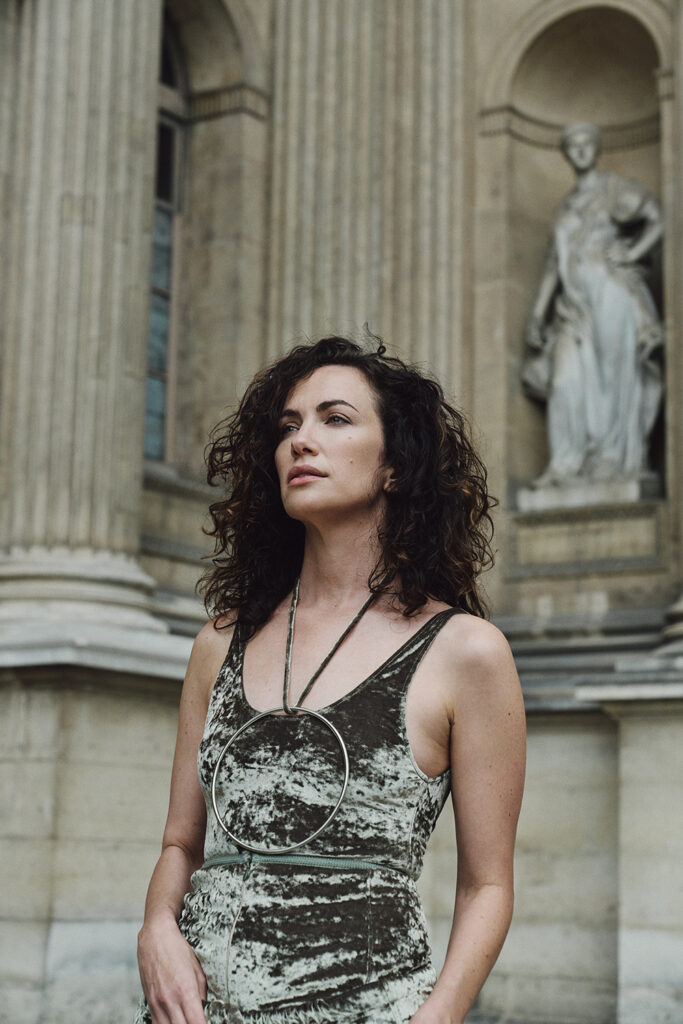
Body Suit, Vest, Pants, Heels & Necklace available at Veronique LeRoy

Body Suit, Trench Jacket, Heels & Necklace available at Veronique LeRoy
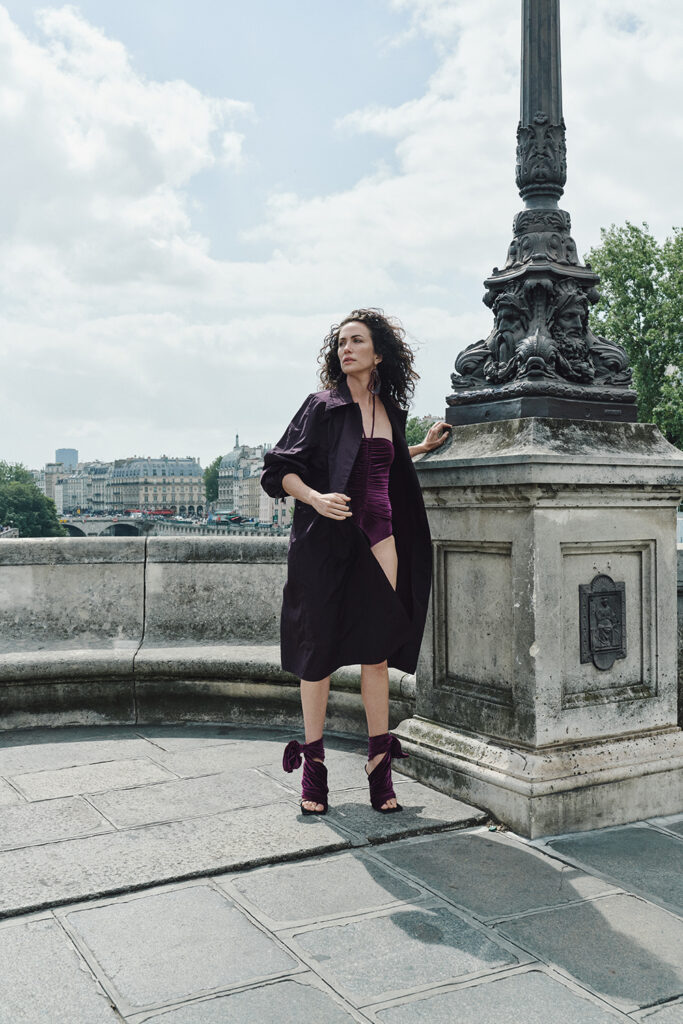
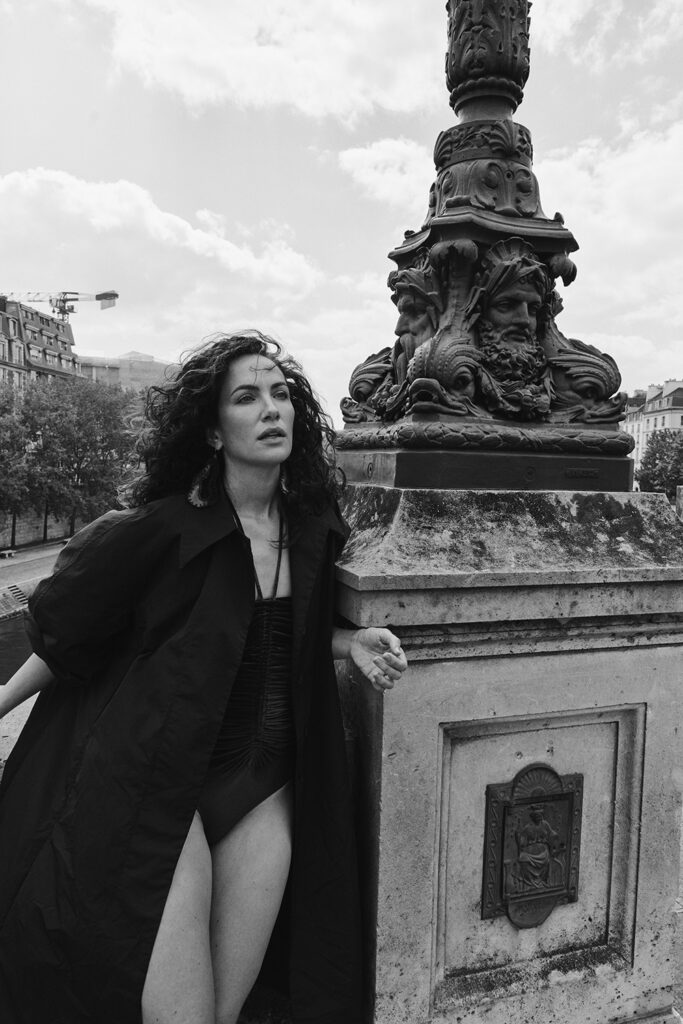
Body Suit, Trench Jacket, Heels & Necklace available at Veronique LeRoy
Photography
